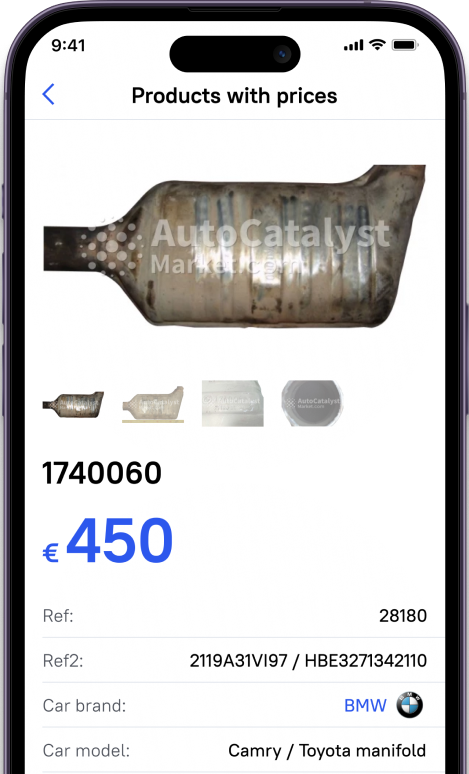- What is the essence of misfiring with a catalyst?
- How the control unit registers the problem?
- What is better to do when misfiring is detected?
First of all, the catalyst is an essential part of a whole car, as well as ignition. Among many reasons for a malfunction of ignition, that can cause a misfire, the main ones are:
-
Failure of catalyst elements of the ignition system. Armored wire, spark plugs, coil, or breaker-distributor. Also, at low temperatures in candle wells, condensation may form, which can cause "breakthrough" into a catalyst.
-
Malfunctions in the fuel-air system can be associated with clogged dirt and deposits in injection nozzles, air and fuel filters. These ailments are manifested in the "triplet" of an engine at idle, which disappears after warming up.
-
Low compression in all cylinders or its non-uniform distribution indicates wear of elements of a cylinder-piston group or malfunctions in the operation of gas distribution mechanism.
-
The incorrectly adjusted valve can lead to a violation during the compression stroke of the tightness of the entire catalyst chamber. The lack of an optimal fit of a valve disc to the seat, as well as burnout of a valve, will become reasons for misfiring.
-
Poor fuel quality, leaks, or low delivery pressure due to improper catalyst operation of the fuel pump can also cause a misfire.
-
Failure in catalyst operation of the electronic control unit entails the transmission of an incorrect signal from sensors to turn off injectors. Therefore, the engine begins to "triple", there is a misfire.
-
The motor shakes and does not run. A problem that is easy to describe in words, but difficult to find. The stricter name for this problem is a misfire.
What is the essence of misfiring with a catalyst?
Catalyst misfire refers to problems with ignition system - plugs, coils, and so on. Ignition (ignition) misfires are bad not only because they create discomfort to the driver, but also because unburned fuel in the catalyst case enters the exhaust. This is not good for the environment and catalyst. Fuel washes away oil film from cylinder walls, and this can lead to increased cylinder and piston wear.
The vast majority of cars on our roads are equipped with a catalyst. Catalyst where toxic components of the exhaust are oxidized to harmless compounds. Catalyst is a metal or ceramic "honeycomb" coated with a layer of noble metals, in presence of which oxidation occurs faster. A catalyst works at high temperatures (400-800 ° C). In the event of a misfire, when unburned gasoline gets on it, the temperature of a catalyst rises to 1400 ° C, which leads to its melting or destruction. Melted catalyst stops passing exhaust gases, which leads to new problems. It is more difficult for the engine to start, and the power is reduced. If the catalyst breaks down, resulting crumb can be drawn into cylinders, where it works as an abrasive, very quickly leading to a need for an overhaul of the engine.
After the destruction of a catalyst, it must either be changed or removed. Removing the catalyst is a questionable action both from the environment and from the consumer qualities of the car. Starting with the fact that exhaust without neutralizing toxic substances smells pretty strong, and ending with the fact that it is necessary to somehow "deceive" the control unit, which is not always realistic to do correctly. A new catalyst is quite expensive, even if you change it not entirely in a housing, but separately in a honeycomb.
To replace it, the body of a catalyst is opened, honeycombs of the old (melted or crumbled) catalyst are removed, and a new catalyst is welded in its place. Based on the foregoing, it is clear that the catalyst control unit must register misfire, both for environmental reasons and avoid damage to the engine and catalyst. It is difficult to say which of two reasons became the main one, but modern control units can register passes. The implementation of this requirement is different for everyone. There are catalyst blocks and cars that do not register misfire even when the cylinder is completely disabled.
How the control unit registers the problem?
No sensor can be used to determine unambiguously whether a cylinder has ignited. An indirect registration algorithm is included in the control units. Catalyst control unit analyzes uniformity of crankshaft rotation according to signals from the crankshaft position sensor. Uneven rotation is considered a misfire under certain conditions. As a rule, deviations are taken as more than 0.2%. Also, on cars with individual ignition coils, the coil control circuits are monitored, if the connector is removed from one coil, the control unit will mark this cylinder as inoperative.
Even if misfires were recorded reliably, and not by indirect indications, it would be incorrect to turn off the cylinder at one fixed pass. The Control Unit has a misfire counter parameter for each cylinder. As a rule, the control unit decides that there are misfires and it is necessary to turn off cylinder if the number of misfires in any of cylinders exceeds a certain threshold set by the developers.
What is better to do when misfiring is detected?
The first and most important thing that the catalyst unit does when detecting misfires is Check Engine lamp flashing. This is one of the few reasons the check is flashing. There are so few that one can conclude with almost one hundred percent certainty: "check" is flashing, it means misfire.
The second thing that the block does, is turning off the fuel supply to the cylinder in which gaps are fixed. Signals for opening simply cease to be given to the corresponding injector.
Do not wait till your catalyst cause any kind of problems to the vehicle. It may happen any time, so be careful with any sign of failure and control all the car parts in time to avoid expenses for catalyst replacement.












































